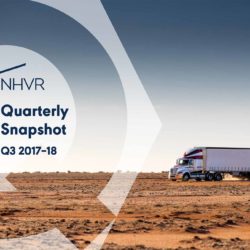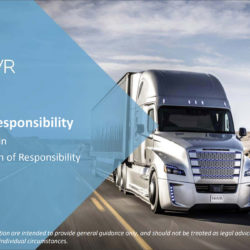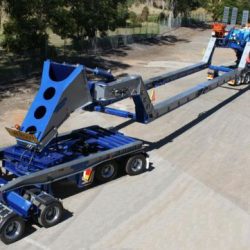In Part One of our look at the latest developments relating to the Heavy Vehicle National Law, we looked at changes being made to Safety and Compliance. In Part Two we’re going to focus on how these developments are being felt in the areas of Productivity and Performance.
Productivity improvements
Adelaide’s pre-approved heavy vehicle network grew bigger in March 2018, with an extra 27 kilometres being added. This came in the form of 33 additional roads in the northern and western suburbs of Adelaide that can now accept traffic of heavy vehicles up to 30 metres in length. This move will greatly reduce permit application times and increase general industry productivity, as road managers can focus their time on complex applications instead of seeking approvals for these areas. 268 pre-approvals are already in place across South Australia, with 1855 pre-approvals nationwide.
The NHVR’s Performance Based Standards (PBS) scheme continues to make inroads into the heavy transport industry, with new extensions made to the application process in January 2018. A-doubles, B-doubles and prime mover semi-trailer combinations were added in this period, and even more, were added in May. The NHVR reported that in 2017 the application processing waiting time for pre-advisement went from 28 days to three days, a marked performance increase for applicants.
The process of applying for permits was itself a target of welcome attention in November 2017. The NHVR’s online permitting system received recognition in the form of the Prime Minister’s Award for Excellence in Public Sector Management. In a field of 17 other contenders for the award, the NHVR Portal, launched in August 2016, allowed members of the transport and logistics industry to apply for permits entirely online, greatly reducing paper wastage and increasing the speed of the application process. This is another example of how the NHVR is prioritising customer service and improving the accessibility of its systems to the greater industry.
Animal welfare was also given due consideration with newly-presented rules governing cross loading livestock on the border of Western Australia and South Australia. These rules now say that 27.5m B-Doubles that are carrying sheep and cattle can now run directly from the Western Australian border to Dublin’s South Australian Livestock Exchange instead of having to cross load at the border. This is a change from having carrying capacity capped at 26-metre vehicles.
Performance enhancements
The PBS is designed to ensure that there are a greater number of efficiently designed high productivity on the roads and that they are supported by a network of roads designed to handle these loads. This will lead to there being fewer trucks on the road, decreasing congestion and, ultimately, making the roads safer for everybody. 468 new PBS combinations were approved in recent months, over double the amount that was approved this time last year.
Driver fatigue and vehicle management are under the purvey of the National Heavy Vehicle Accreditation Scheme (NHVAS), which oversees the management of not only vehicle mass and maintenance but also ensuring drivers are operating to the best of their abilities. In recent months, 6918 heavy vehicle operators received accreditation in over 11,000 modules to keep them well trained in these areas, making them better and safer drivers.
At The Drake Group, we believe in making every trip a safe one. Contact us to find out more about our range of heavy haulage trailers designed to keep Australia moving.



